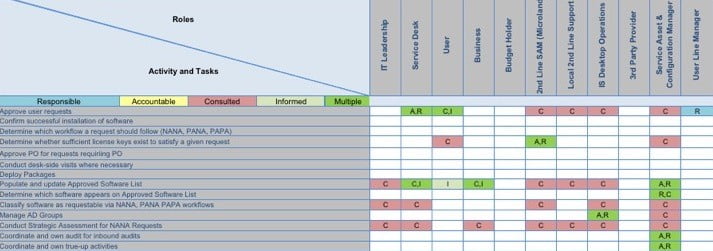Intro
In our IT assessment work, we commonly come across Service Management processes which are poorly documented.
As a result, those involved in executing them are unclear on who does what. They are confused as to why things take so long and quickly become disillusioned with the benefits of processes and documentation.
Of course, we don’t propose that every process is documented to a highly detailed level. We all know that most process documentation sits on a shelf and is never referred to. However, there is one element of any good process model, which in my opinion, is the most valuable.
This is the RACI model. For those who haven’t yet come across this, RACI stands for Responsible, Accountable, Consulted and Informed.
The value is in the discussion and debate that is necessary to arrive at the completed RACI. After this time, it’s quite likely that the RACI will not be regularly consulted. However, if, during its development, all the relevant stakeholders are involved in a lively debate, this can drive out differences of opinion and help improve understanding.
So, when you get frustrated with a process, because it’s not performing as you’d hoped, take the opportunity to run a RACI workshop to work out exactly who should be doing what.
You might even want to get an external facilitator involved. Someone who is independent of any organisational politics or other constraints.






